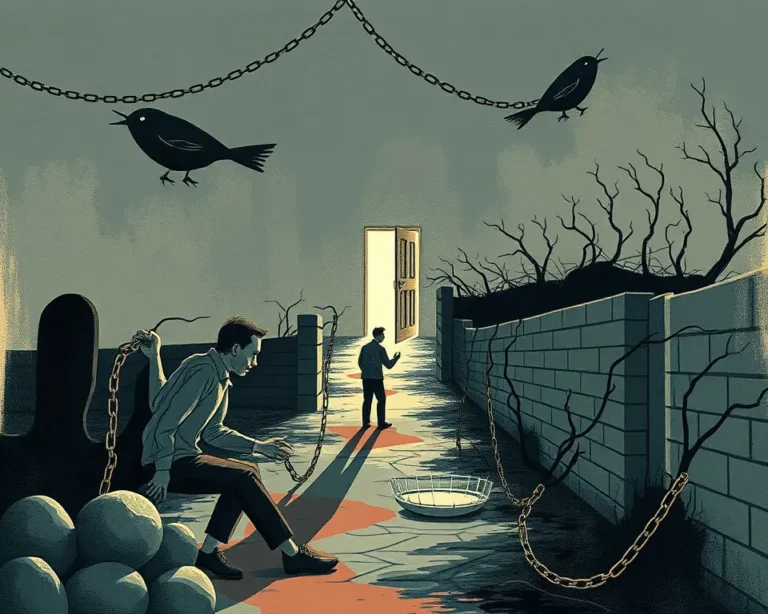Mental health is just as crucial as physical health, yet accessing mental health care remains a significant challenge for many. In the U.S., one in five adults experiences a mental health condition each year, but more than half don’t receive the necessary treatment. Recognizing and addressing the barriers to mental health care is essential to improving individual well-being and community health. This article explores the most significant obstacles individuals face when seeking mental health support and discusses potential solutions to bridge these gaps.
Understanding the Mental Health Crisis
The need for mental health services is greater than ever. A Kaiser Family Foundation and CNN survey revealed that 90% of the public believes there is a mental health crisis in the United States. This perception is supported by the fact that half of young adults and one-third of all adults report frequent feelings of anxiety. From 2008 to 2019, the number of adults with any mental illness increased by nearly 30%, and the COVID-19 pandemic has further exacerbated mental health problems for all ages. Untreated mental health issues can severely impair a person’s ability to manage daily responsibilities, affecting their school, work, and family life. Ensuring access to mental health care can dramatically reduce the risk of suicide, legal issues, family conflict, unemployment, and substance abuse.
Top Barriers to Mental Health Care
Several significant barriers prevent people from accessing the mental health care they need. These include financial constraints, stigma, lack of access, workforce shortages, and cultural misunderstandings.
1. Financial Barriers
The cost of mental health treatment is a major impediment for many individuals. Although the Affordable Care Act (ACA) mandates that medical insurers cover behavioral and mental health care, the actual cost of treatment can still be prohibitive.
- High Costs: A typical 60-minute therapy session can range from $100 to $200, and these costs can quickly accumulate with regular therapy, medication management, and intensive treatment programs. Even with insurance, copays and deductibles can be a burden.
- Insurance Coverage Gaps: While the ACA requires mental health coverage, not all plans are equal. Some plans may have high out-of-pocket costs, limited provider networks, or restrictions on the number of covered sessions. A survey indicated that nearly one-third of patients find mental health treatment financially out of reach.
- Economic Impact: Untreated mental health issues can lead to higher healthcare costs, reduced workplace productivity, and increased absenteeism. Mental health inequities in the U.S. cost an estimated $477.5 billion annually in avoidable expenses.
- Debt Accumulation: Approximately 1 in 10 Americans have accumulated debt to pay for mental health treatment, with an average debt of around $2,500.
Solutions:
- Advocate for better insurance coverage: Push for policies that ensure comprehensive mental health benefits with lower out-of-pocket costs and broader provider networks.
- Explore sliding-scale fees: Many therapists and clinics offer sliding-scale fees based on income, making treatment more affordable.
- Utilize community resources: Community health centers and non-profit organizations often provide low-cost or free mental health services.
- Consider digital interventions: Mental health apps and digital therapeutics can offer more affordable alternatives to traditional therapy, though insurance coverage may vary.
2. Stigma and Social Barriers
Stigma remains a significant barrier, preventing individuals from acknowledging their illness, seeking help, or adhering to treatment.
- Public Stigma: Negative attitudes and beliefs from individuals or larger groups towards people with mental health conditions can lead to discrimination in social, cultural, and professional circles. People may fear being avoided or treated differently by family and friends or facing adverse perceptions at work.
- Self-Stigma: Internalizing public stigma can lead individuals with mental health conditions to believe they are flawed or to blame themselves for their condition. This can result in feelings of shame, reduced self-esteem, and a reluctance to seek help.
- Cultural Stigma: Certain cultures may have different beliefs and attitudes towards mental illness, often leading to discrimination and marginalization. Some cultures may attribute mental illness to supernatural causes or believe that seeking help is a sign of weakness.
- Gender Disparities: Men are more likely to report feelings of personal stigma associated with their mental health disorder.
Solutions:
- Promote open conversations: Initiate discussions about mental health to debunk misconceptions and foster a more accepting environment.
- Share personal experiences: Sharing personal stories can help reduce stigma and encourage others to seek help.
- Educate the public: Provide accurate information about mental health conditions to combat negative stereotypes and promote understanding.
- Support anti-stigma campaigns: Participate in campaigns that aim to reduce stigma and discrimination associated with mental illness.
3. Lack of Access to Mental Health Services
Access to mental health care is limited by several factors, including a shortage of mental health professionals, geographical barriers, and complex healthcare systems.
- Professional Shortages: The U.S. faces a significant shortage of mental health professionals. Millions of Americans live in federally-designated Mental Health Professional Shortage Areas. As of 2021, over half of the counties in the U.S. had no practicing psychiatrists.
- Geographical Barriers: Rural areas often have disproportionately low numbers of mental health professionals compared to urban areas. Many individuals in these areas must travel long distances to access care.
- System Complexity: Navigating the healthcare system can be complex and confusing, making it difficult for individuals to find appropriate mental health services. Fragmented care between mental health and physical health can also hinder access.
- Limited Availability: Many mental health providers have full caseloads and may not be accepting new patients. Additionally, the hours of operation for many providers may conflict with school or work schedules.
Solutions:
- Expand the mental health workforce: Increase the number of training programs and residency slots for mental health professionals.
- Telehealth: Utilize telehealth and digital mental health services to reach individuals in remote areas and those with limited mobility.
- Integrate mental health with primary care: Integrate mental health services into primary care settings to improve access and reduce stigma.
- Streamline the referral process: Make it easier for individuals to find and access mental health services by simplifying the referral process.
4. Cultural Barriers
Cultural differences can create misunderstandings and frustration between providers and patients, leading to misdiagnoses and unsuccessful treatment plans.
- Lack of Diversity: The mental health field lacks diverse representation. Many individuals are less likely to seek help if they think their doctor cannot understand or empathize with their background, cultural differences, and experiences.
- Language Barriers: Language barriers can lead to misinterpretations and mistranslations, creating confusion and frustration.
- Differing Beliefs: Some cultures may have different understandings of illness or health, attributing mental illness to black magic, karma, or spirits.
- Mistrust of the System: Certain populations may have a mistrust of the U.S. health care system due to historical and ongoing experiences of bias and discrimination.
Solutions:
- Promote cultural competence: Mental health professionals should learn about cultural norms, beliefs, and values to better understand and serve individuals from diverse backgrounds.
- Increase diversity in the workforce: Encourage individuals from diverse backgrounds to enter the mental health field.
- Provide language support: Offer resources and interpretation services in individuals’ preferred languages.
- Address bias and discrimination: Implement policies and practices that address bias and discrimination in the delivery of care.
5. Lack of Awareness and Education
A general lack of mental health education and awareness is a common barrier to seeking treatment.
- Unrecognized Symptoms: Individuals may not recognize the signs and symptoms of mental illness or understand how treatment can help.
- Misconceptions: Misconceptions about mental illness can lead to a lack of understanding and support from family, friends, and coworkers.
- Limited Knowledge: Many people are unaware of the available mental health resources and services.
Solutions:
- Increase mental health literacy: Provide education and awareness programs to improve understanding of mental health conditions and reduce stigma.
- Promote early intervention: Encourage early screening and intervention for mental health issues.
- Disseminate information: Make information about mental health resources and services readily available in communities and online.
The Path Forward
Addressing the barriers to mental health care requires a multi-faceted approach involving individuals, communities, healthcare providers, and policymakers. By increasing awareness, reducing stigma, improving access, and promoting culturally competent care, we can ensure that everyone has the opportunity to seek and receive the mental health support they need. The economic and social costs of untreated mental illness are too high to ignore, making it imperative that we work together to create a more equitable and accessible mental health system.







